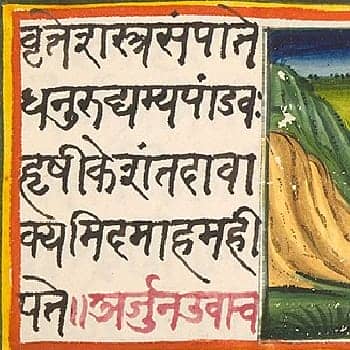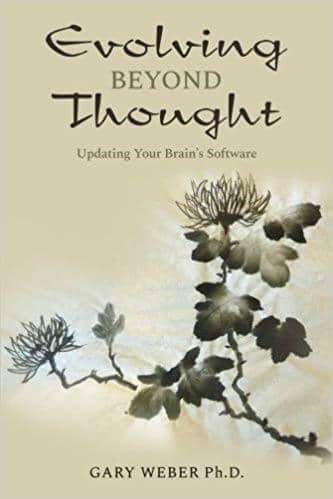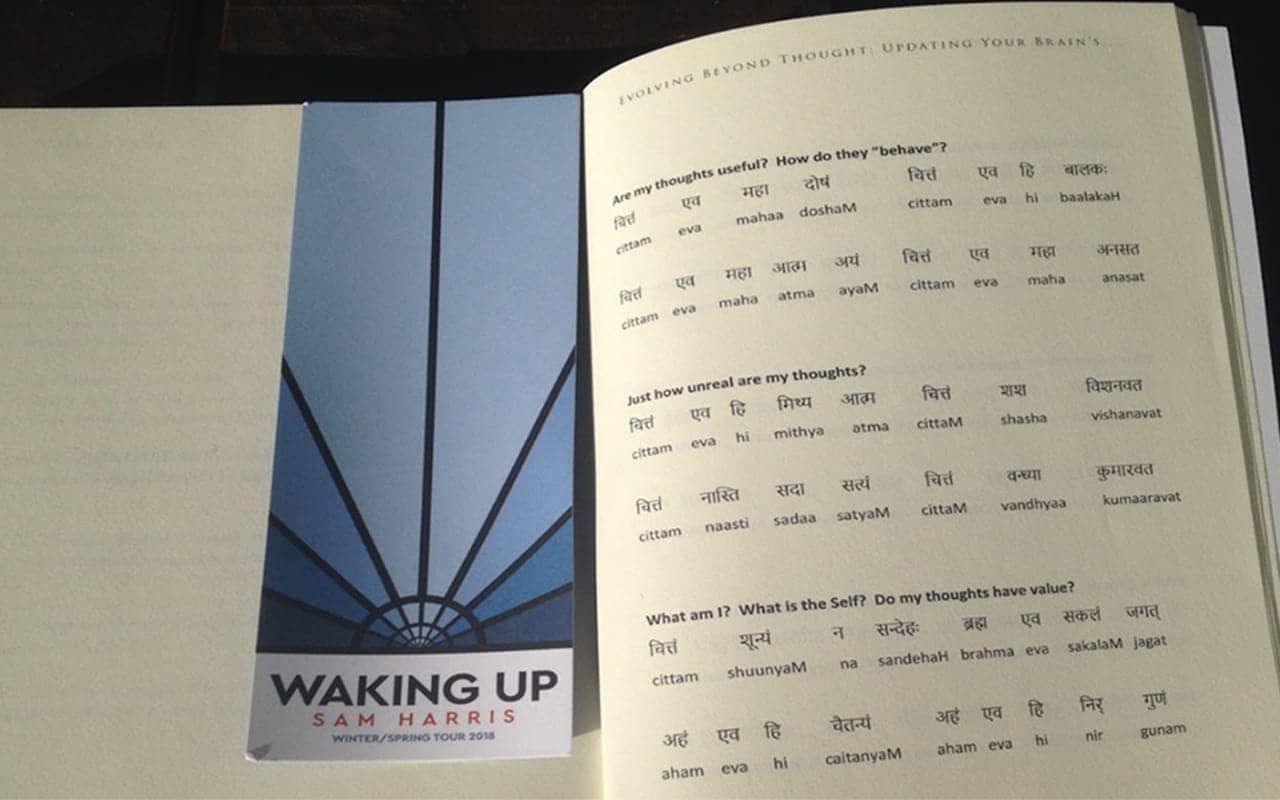 I’ve been memorizing Sanskrit phrases since 2017 as part of my research into enlightenment.
I’ve been memorizing Sanskrit phrases since 2017 as part of my research into enlightenment.
During this time, I’ve memorized several long form mantras totalling nearly 2000 words.
On this page, I will share some of my favorite phrases and Sanskrit words that I have found especially useful for use in meditation. They also help with developing mindfulness and critical thinking.
In other words, our goal is to go far beyond hello in Sanskrit. One way to say that is नमस्ते (namaste), by the way.
It’s not really, “hello,” however. Directly translated, namaste means something more akin to “honor” or “not mine, but yours – yours, the Divine.”
By the end of today’s lesson, you’ll know exactly what these phrases mean and you’ll have discovered the scientific studies that demonstrate the value of learning them.
As you’ll see, it’s not just about committing them to memory. It’s the details and nuances that make learning them such a pleasure.
Ready?
Let’s dive in!
4 Sanskrit Phrases You Need to Remember (And How to Remember Them)
Frankly, I don’t know if enlightenment is possible or not. I’m not even sure anyone has ever agreed on exactly what the term means.
But I’ve enjoyed many incredibly experiences that make me question the differences between philosophy and religion. And I think I understand fairly well one of the proposed definitions of Enlightenment. It’s not really about feeling blissful all the time, though that is great. It’s more about seeing through the illusion of being a separate person, something neuroscientists have been working on explaining.
We don’t know why exactly we think of ourselves as individuals, but it’s not at all clear that we are for many reasons that have been discussed for thousands of years. In the age of tools like chatGPT for language learning, the illusion of the individual self is even more challenged. People are falling all over themselves to claim that AI will inevitably “infuse” itself with everything.
But in order for such logic to work, there has to be a self/other division. And that is not even remotely clear, even if people claim they feel like there is a difference between humans and machines (something Ramon Llull and Robert Fludd challenged long ago).
Although I sometimes experience “oneness” and the sensational absence of “me” as an individual, my transformation is not yet total. I certainly remain an ego-based philosopher and teacher of the science of memory. I just happen to have enjoyed many flashes of मोक्ष (moksha) just about every day since I started memorizing Sanskrit श्लोक (shlokas). It has a lot to do with memorizing Sanskrit phrases and reflecting on the ideas contained by them changed my life completely.
I’ll spare you the full story of how I got into memorizing Sanskrit phrases so we can get on with today’s tutorial. But if you’re interested, it’s all written up in The Victorious Mind. It’s also been delivered in what has turned out to be a very popular TEDx Talk about the power of memorizing Sanskrit phrases.
One: Ribhu Gita Extract Opening Sequence
The most useful Sanskrit phrases I’ve found help you stop taking your own mind seriously. They also help you stop taking things that other people say personally.
The Ribhu Gita is a rather long book. That’s why Dr. Gary Weber selected the most important passes to create a 32 verse extract for meditation and contemplation.
He gathered these Sanskrit phrases in a book called Evolving Beyond Thought. I find the opening and closing passages the most powerful. To include the largest amount of readers, here are the transliterations of these verses in case you cannot read the Sanskrit writing system.
Cittam eva mahaa dosham
Cittam eva hi baalakah
Chittam eva maha atma ayam
Chittam eva maha anasat
Dr. Weber’s English translation:
Thought alone is the great folly.
Thought alone is the small boy.
Thought alone is this great man.
Thought alone is the great unreality.
In other words, your thoughts are not real. They behave like un untrained child. As long as you think your thoughts are real, you are not as great as you could be because you’re trapped in silly things.
I’ve found that working with these verses has helped me let go of unwanted thoughts many times. As a result, I’ve enjoyed a lot more mental strength.
The best part? My experiences are not anecdotal. Here’s some of the scientific evidence that working with mantras provides numerous benefits. Another study has confirmed the benefits for reducing anxiety, stress and depression.
Better still, Dr. Tim Dalgleish and his research team have shown that the memory techniques I used to memorize the Sanskrit also help practitioners reduce depression and anxiety. I started feeling the results so quickly, I carried on memorizing Sanskrit phrases and haven’t stopped since.
Two: Ribhu Gita Capping Verses
Weber ends his selection from the Ribhu Gita with phrases that help you reflect on the nature of reality. They also remind you of how to practice and reassert your goal.
Here’s what I mean:
Aatma jnaanam param shaastram
Aatma jnaanam anuupamam
Aatma jnaanam paro yoga
Aatma jnaanam paraa gatih
Aatma jnaanam cittana ashah
Aatma jnaanam vimuktidam
Aatma jnaanam byana asham
Aatma jnaanam sukha avaham
In translation:
Self-knowledge highest science
Self-knowledge unequalled (or beyond compare)
Self-knowledge highest yoga
Self-knowledge supreme goal
Self-knowledge thought termination
Self-knowledge liberator
Self-knowledge fear dispeller
Self-knowledge happiness generator
In other words, practicing self-inquiry through meditation and mindfulness practices is the ultimate science. It can help stop unwanted thoughts and create मोक्ष (moksha) or liberation. Even if you don’t know Sanskrit grammar, you might be able to see the form of the word moksha as it is modified in the word vimuktidam to describe liberation.
Since we have every reason to trust the scientific evidence I cited above that memorizing and working with Sanskrit mantras improves our lives, it only makes sense to give it a try so you can also enjoy liberation from suffering.
Three: The Most Important Line From Bhagavad Gita
Here’s a highly cherished line that I memorized using an art gallery in Brisbane as my Memory Palace:
aham atma gudakesha sarva-bhutashaya-sthitah
aham adish cha madhyam cha bhutanam anta eva cha
Translated, this line from the Bhagavad Gita basically means:
O Arjun, I am seated in the heart of all living entities. I am the beginning, middle, and end of all beings.
Looked at simplistically, it’s easy to mistake the speaker as someone pretending to be God. The meaning is much more subtle and interesting than that, however. Which brings us to my next favorite line.
Four: The Field & The Knower Of The Field
When thinking about the nature of ultimate reality using the “ultimate science” of inquiry, the Bhagavad Gita says:
ksetra-jnam cāpi mam viddhi
sarva-ksetresu bhārata
ksetra-ksetrajnayor jnanam
yat taj jnanam matam mama
Translated, this means:
O scion of Bharata, you should understand that I am also the knower of the field and all the bodies in the field, and to understand both these bodies and their knower is called knowledge.
Perhaps an easy modern way to think of this phrase is something I repeat often on the Magnetic Memory Method Podcast and YouTube channel:
Content may be king, but context is god.
In other words, reality and the laws that govern human relationships to others and the world are like a field of dense connections. The more you can remove yourself from taking any of it personally in the context of billions of years and billions of people, the more you can release yourself from the ego.
The ego wants to feel unique and special, but mathematically, each person and all their thoughts is really just a grain of sand in a massive field beyond imagination. But because every cell in your body and every thought you think is still fundamentally related to that unimaginable vastness, you’re equipped to know it at the level of what some scientists call intrapersonal intelligence.
These are incredibly complex ideas. All the more reason to get started with philosophy if you haven’t already. It’s important. If you want liberation, critical thinking is the key and the best Sanskrit phrases were written to try and help you deduce and induce the truth about the nature of your own being in relation to others.
Speaking of fields and relationships to others, I’m not the only memory expert interested in Enlightenment. John Graham is a 3x USA Memory Champion who also uses his mind to explore how training your memory can lead to states of bliss.
Will Learning Sanskrit As A Whole Help?
A natural question I often get is:
Will learning Sanskrit on top of memorizing Sanskrit phrases help?
In a word, yes. Here’s a tutorial I put together that details exactly how to learn Sanskrit effectively and efficiently.
However, learning Sanskrit isn’t absolutely necessary. I’ve found that learning about its history, grammar, morphology and other features is definitely fun and useful for better understanding the broader context of why certain Sanskrit words are used so commonly.
But you can get a lot of mileage purely out of memorizing Sanskrit phrases without any comprehensive language learning effort at all. I’ve also studied Chinese for many years, after all. It hasn’t really helped me understand the Heart Sutra any more or less, and that’s because the meanings of words and phrases belong to the deep structure.
Not everyone agrees with this view, but I would suggest at least considering John McWhorter’s TED Talk on the matter. If I understand him correctly, the surface structure of various languages in no way effects what things mean in any substantial way. That’s why I’ve focused much more on using the tools that make memorizing scripture easy much more than language learning for contemplative purposes. When I study a new language, I focus on languages I actually want to speak and I recommend that the definition of the best language for you should take how you intend to use it into consideration.
In any case, I’m not here to solve philosophical questions about how languages generate meaning. I’m here to help you memorize Sanskrit phrases, especially those that help you focus, concentrate and feel great.
So if you’d like to use memory techniques to make learning dozens of Sanskrit phrases faster, easier and fun, get my free course right here:
It gives you four video tutorials and worksheets. These show you exactly how I’ve memorized multiple Sanskrit mantras in very short periods of time.
Although some Sanskrit phrases are certainly more challenging than others, once you know how to use mnemonic images well, you’ll always be able to keep making progress.
There are countless phrases, after all, so dedicated practice using the best possible mnemonic strategies is key.
Do that, and I you won’t need good luck. But since we’re talking about Sanskrit phrases, I’ll wish you सौभाग्यम् (saubhāgyam) anyway. Good luck and have a nice day – सुदिनमस्तु (sudinamastu).
Related Posts
- What If You Could Memorize Just One Word Continued
Here are some of the submissions I received when I asked people what if they…
- How Many Words Can You Place In A Memory Palace?
Are you wondering how many words you can place in a Memory Palace? If so,…
- How Will Australia's Best Memory Champ Memorize The ENTIRE Dictionary? Anastasia Woolmer Reveals All
Anastasia Woolmer is Australia's best memory champ. To make mnemonics more meaningful, she's memorizing a…







